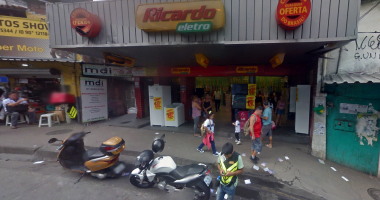Between alleys and alleys, we find the resident Ari da Silva, 40 years old, with his tapioca gum, coalho cheese, white and red beans, brown sugar and other spices typical of the Northeast. Anyone who knows the owner of the stall, which is located in Largo do Boiadeiro, can’t imagine what he’s had to go through to get here.
The first job was as a cold float, in Pernambuco. He was away from his family for half the year because of the sugar cane production. During the other six months, he would return home to Campina Grande, Paraíba. Despite working hard, the salary was not satisfactory. “I spent six long years of my life working hard and earning little, on average 10 reais a day,” he says.

Tired of the exhausting journey and low salary, Seu Ari decided to move to Rio de Janeiro in search of a better life. Adapting to a new location was difficult, but with the help of an aunt, who lived in Rocinha, he started working in the family business: a spice stall. The business became his livelihood and inheritance after his aunt died.
Hoje, 12 anos depois, a barraca de especiarias continua prosperando, trazendo para os moradores da Rocinha um pouco do Nordeste. Entre um e um milhão, Ari conquistou seu espaço e sua clientela com toda sua humildade e simpatia. Com a venda dos produtos nordestinos, o comerciante conquistou a tão sonhada casa própria e consegue sustentar a esposa e as duas filhas.
Caminho do Boiadeiro é um lugar histórico
No início da Rocinha, na época da fazenda Quebra-Cangalhas, toda a região onde respectivamente se situa o Largo do Boiadeiro pertenceu a um só dono, conhecido como Sr José Boiadeiro. Como o nome já diz, o ‘dono das terras’ criava muito gado na região, andava a cavalo, e corria atrás de seus bois com o laço na mão, daí a originalidade do apelido. A região, que na escritura pertencia oficialmente a família Castro Guidão, era uma grande chácara com muitas plantações, pés de frutas, criações de animais, e tinha até um córrego de água doce.
Nowadays, in Caminho do Boiadeiro, there are three large banks, Itaú (formerly Banerj), Caixa Econômica Federal and Banco do Brasil. Until a few years ago, Dona Terezinha, widow of Zé Boiadeiro, alone ran a huge warehouse in the heart of Largo do Boiadeiro, today a well-known shopping center for Rocinha residents.
On Sundays, a large fair with Northeastern products is set up on site. It is considered the second largest in Rio and second only to Feira São Cristóvão. The fair on Sundays is also a great meeting point for people who live in the sub-neighborhoods of the favela, animated by the sound of guitar players and repentistas.












